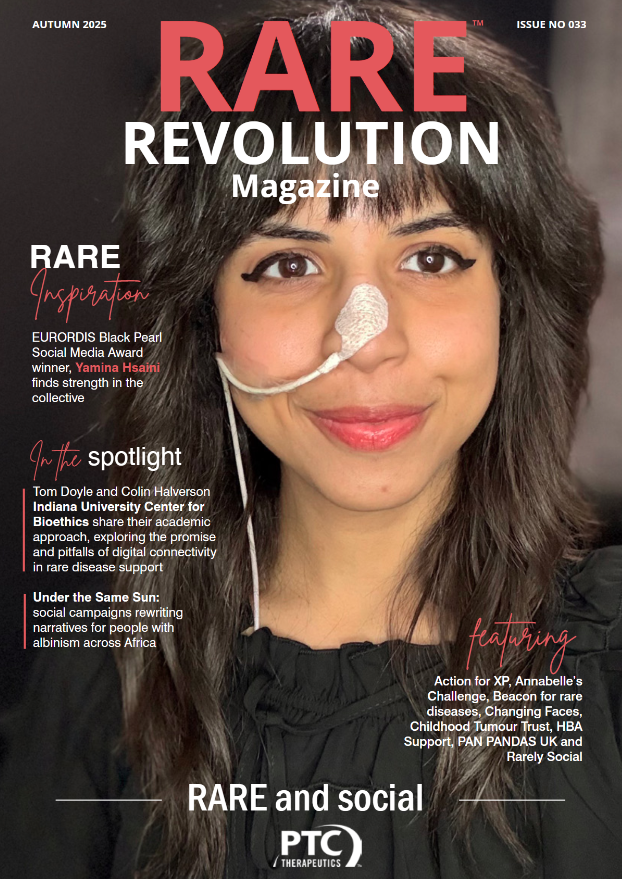Mila’s journey with CCHS
Dad, Mete Redif, shares his daughter Mila’s journey with congenital central hypoventilation syndrome (CCHS)
Written by Mete Redif, rare dad to Mila
Our daughter Mila was born on the March 7th, 2023, via caesarean section, and we were excited to begin life as a family of three. What we weren’t prepared for was the whirlwind journey we would go on—three rare diagnoses, multiple surgeries and several hospitalisations.
Mila has congenital central hypoventilation syndrome (CCHS), a condition that causes her to stop breathing every time she goes to sleep, meaning she relies on artificial life support (bipap) and nurse care every night to stay alive. CCHS is so rare that we had never heard of it. Nor had we heard of the other two diagnoses she received, Hirschsprung’s disease and hyperinsulinism.
Shortly after delivery, Mila was taken to the NICU due to a very low body temperature. A matron, who knew me from my NHS charity work, noticed something wasn’t right and asked for Mila to have a sats probe put on her foot—this is when we first knew it was more serious than we thought. Mila’s oxygen saturation and respiratory rates were extremely low and she was quickly placed in an oxygenated incubator. Later that night we were transferred by ambulance to Great Ormond Street Hospital, London (GOSH)—things were deteriorating very fast.
Mila’s tummy was distended, and she couldn’t pass stools—typical signs of Hirschsprung’s Disease. Within ten days, she underwent her first surgery and received an ileostomy (stoma) (later reversed at 18 months old).
A CCHS diagnosis was suspected within six weeks due to high CO2 levels. This was later confirmed via genetic testing in week 12. I remember seeing Mila for the first time with her bipap mask on—my heart sank— she was so small it took up most of her face. I just couldn’t believe she had to wear this when sleeping to stay alive. Ironically, it was the Hirschsprung’s diagnosis that led to closer monitoring and ultimately saved her life.
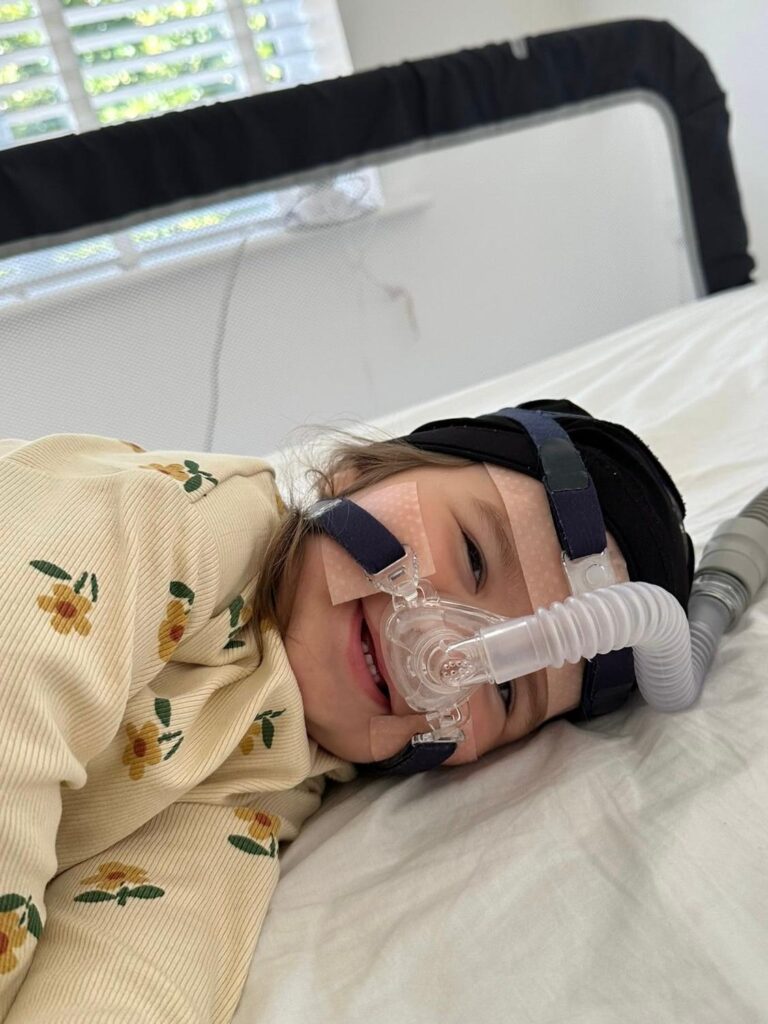
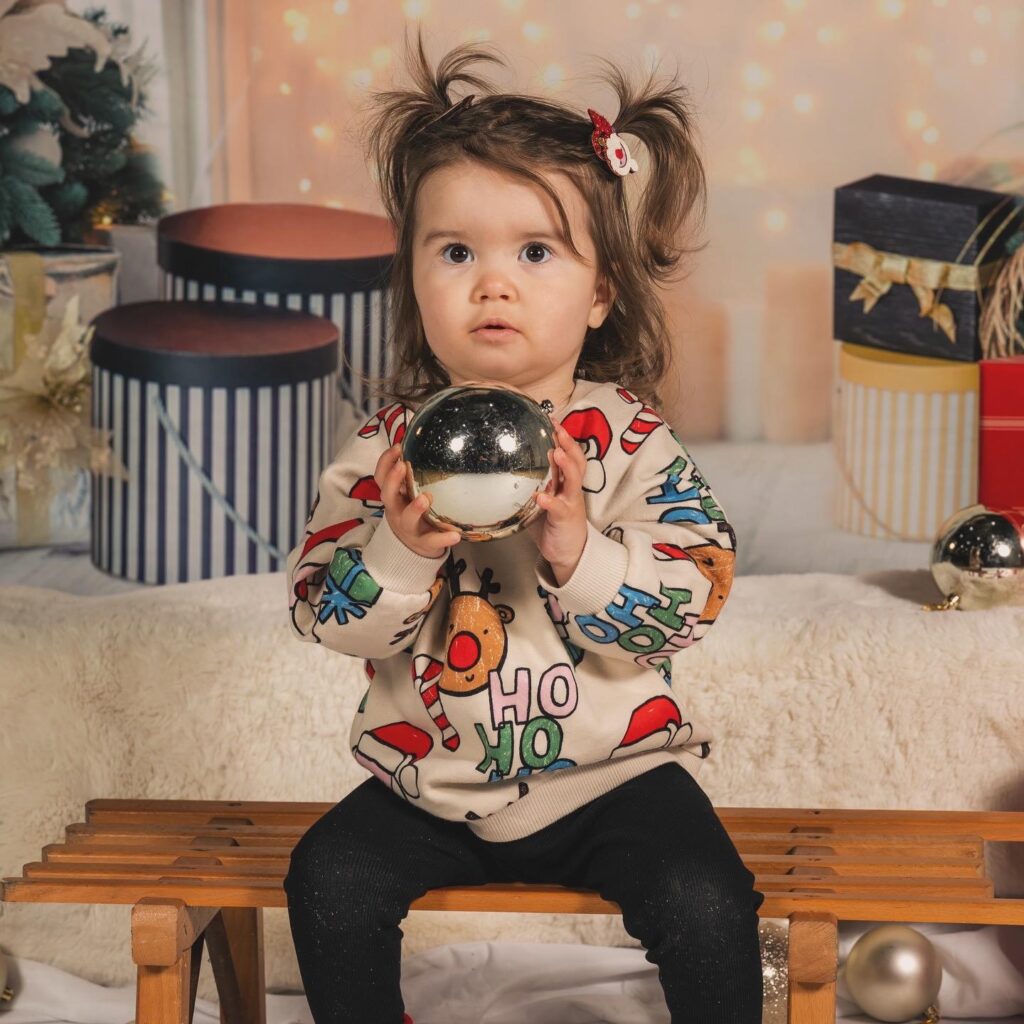

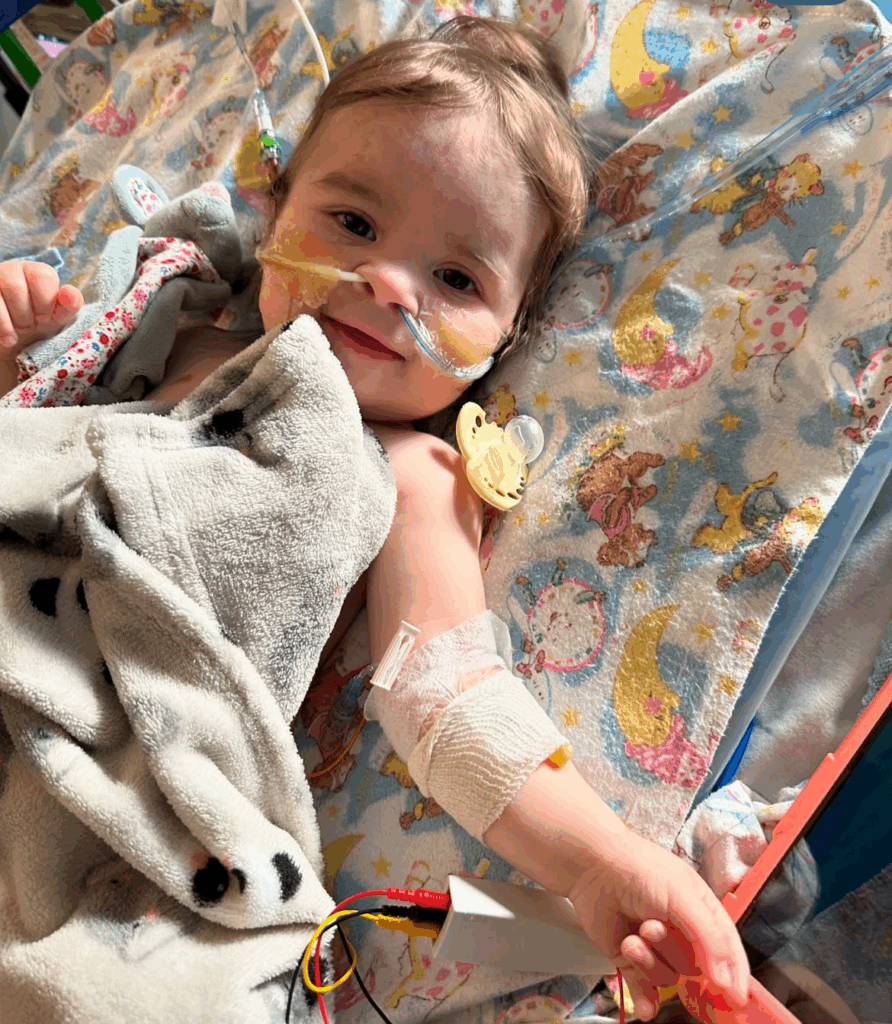
Those first months were a blur with conversations about bowel surgery, ventilation, and new realities we hadn’t prepared for. After four months at GOSH, we finally brought Mila home to begin our “new normal.” But within months Mila was readmitted to hospital and received a third diagnosis—hyperinsulinism, a condition that occurs when the pancreas produces too much insulin. As a result, Mila was tube-fed until 15 months old. During this time, Mila had two prolapses of her stoma which led to 35cm of her small bowel being removed, before then having half of her large bowel removed during her stoma reversal procedures.
Despite everything, we began to see Mila’s strength and personality shine through: picking up her dummy with her feet, playing peekaboo with her blanket and laughing at Puffin Rock on the television—she always made us smile.
Today, Mila is an independent and cheeky two-year-old. She is mask-ventilated whenever she sleeps, her blood sugar is managed with diet and finger-prick tests, and we carefully balance a restricted diet to manage her digestive issues. No two days are the same, but her resilience inspires us daily.
We’ve worked hard to separate Mila’s clinical cares from who she is. Her conditions don’t define her. She is our daughter above everything else—curious, bright and extremely brave.
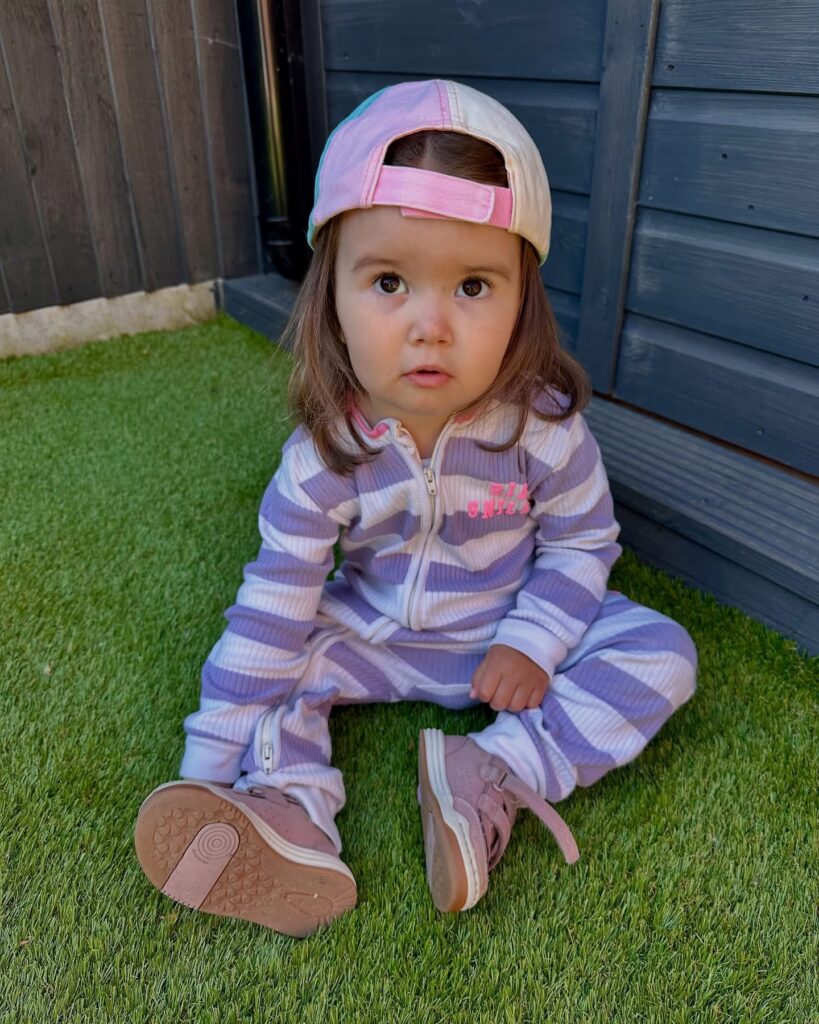
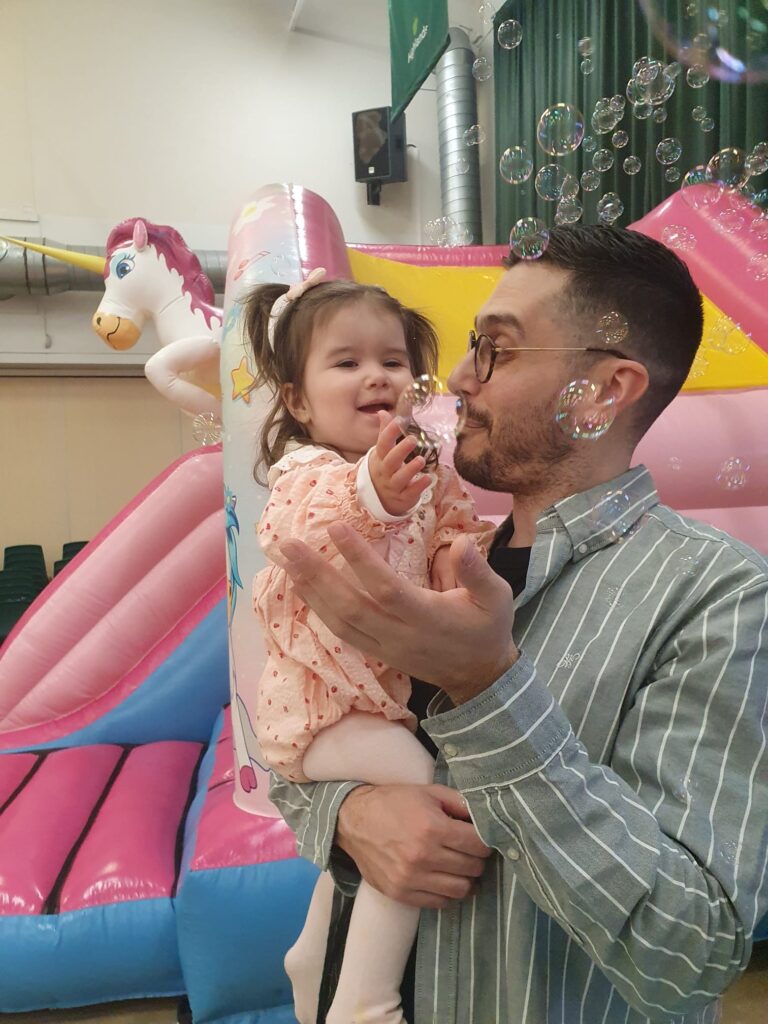
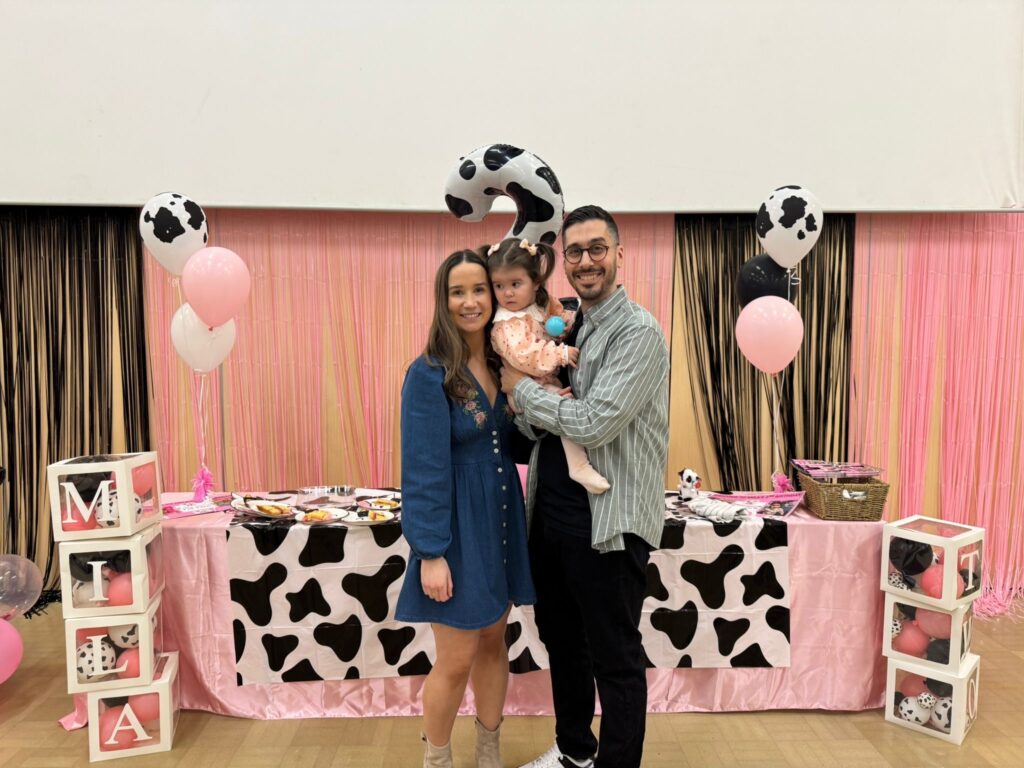
Our wider family and friends have also been impacted but the support and love we receive from everyone is extremely special. Like all CCHS parents our biggest dream is a cure. We just want Mila to be able to sleep safely and unaided. We’ve promised to do everything in our power to support her dreams, whatever they may be.
I now serve on the advisory board for Keep Me Breathing, a UK charity working on treatments for CCHS; including an advanced breathing pacemaker. Backed by over 130 scientists, engineers, and clinicians, and supported by Cambridge Consulting Network, it’s the largest global collaboration that we are aware of in rare disease.
Mila’s mum, Ciara, and I first connected with Keep Me Breathing during a sleep study at GOSH. Ciara found their page online, and James, the charity’s CEO (whose own son Casper also has CCHS) was visiting the hospital at the same time. It was a moment of serendipity during a very difficult period.
With my background in education, fundraising, and NHS charities, I support Keep Me Breathing with innovative fundraising strategies and communications. My goal is to help raise awareness and drive progress in research for CCHS. It’s a privilege to contribute to something that could one day change the lives of children like Mila.
Despite everything, Mila continues to thrive. She loves being outside looking for bugs, dancing to her favourite songs and watching the world go by. She is becoming extremely independent and wants to do everything herself including her medical care, like putting her bipap mask on, testing her sugars and using her gastrostomy. This just shows how resilient she is and we couldn’t be prouder.
While her journey has been anything but easy, it’s filled with hope, strength and an unwavering love and commitment from us her parents, our family, and the wider rare disease community.
With continued research, fundraising, and advocacy, there is hope—not just for Mila, but for every child like her and, as the team at Keep Me Breathing always say: we will keep doing whatever it takes.
